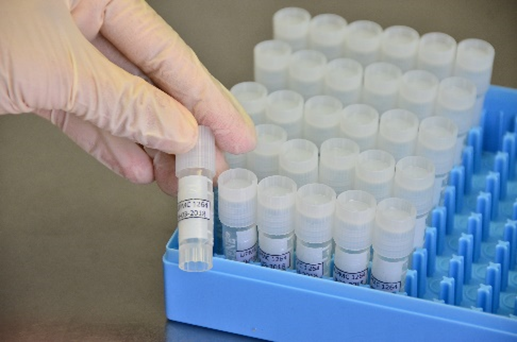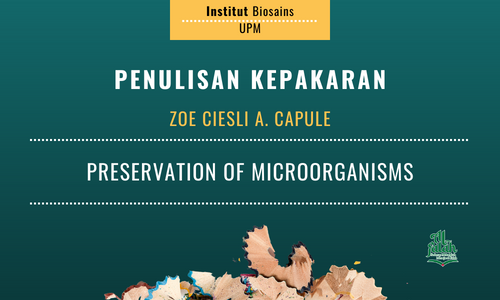By Zoe Ciesli A. Capule
(Virtual Internship Programme student from University Santo Tomas, Philippines. The programme was coordinated by Microbial Culture Collection Unit (UNiCC), Institute of Bioscience)
Have you ever thought of how astounding libraries are for holding such a great amount of knowledge in the form of books gathered from different sources? In a way, microbial culture collections are similar to libraries. Difference is, they do not contain books or answers to life questions but various species of microorganisms, which can be used for the advancement of biotechnology and biology in general. Microbial culture collections play a vital role in the conservation and sustainable use of microbial resources and provide authentic biological material for research 4.
Microbial culture collections are biological resource centers which maintain, supply and provide microbial cultures and microbial materials 1,2. These centers are also responsible for collecting culture data and making it available and accessible to the microbiological research community 1. In addition, these centers also provide a lot of other services such as storage of key organisms for research, identification services, and organization of training programs or workshops about identification and maintenance of microorganisms 1.
Culture collections are found all over the world and are traced back from more than centuries ago 4. Initially these microbial culture collections were used for taxonomy—the science of naming, classifying, and describing microorganisms; and epidemiology—the study of the distribution and determinants of health-related events in specified population and its application to control health problems 3. However, as we developed into a more advanced society, its role has gotten more diverse 4. For instance, the alarming rate of increase in the world’s population poses a threat to the environment due to the excessive use of synthetic agro-inputs to fertilize crops which lead to soil degradation. With the development of innovative and sustainable agro-biotechnologies, the usage of microorganisms has been developed, which allows the crops to grow more productively 2. Hence, it is important to have microbial culture collections to store, supply, and conserve these microorganisms.
With the roles of microbial culture collections in our society, it is vital for our national government and even private sectors to continuously fund and maintain these biological resource centers not only for the academe but also for the betterment of the society.

- Çaktü, K., & Türkoǧlu, E. A. (2011). Microbial Culture Collections: The Essential Resources for Life. Gazi University Journal of Science, 24(2), 175–180.
- Díaz-Rodríguez, A. M., Salcedo Gastelum, L. A., Félix Pablos, C. M., Parra-Cota, F. I., Santoyo, G., Puente, M. L., Bhattacharya, D., Mukherjee, J., & de los Santos-Villalobos, S. (2021). The Current and Future Role of Microbial Culture Collections in Food Security Worldwide. Frontiers in Sustainable Food Systems, 4(January), 1–14. https://doi.org/10.3389/fsufs.2020.614739
- Principles of Epidemiology | Lesson 1 - Section 1. (n.d.). Retrieved September 4, 2021, from https://www.cdc.gov/csels/dsepd/ss1978/lesson1/section1.html
- Sharma, A., & Shouche, Y. (2014). Microbial Culture Collection (MCC) and International Depositary Authority (IDA) at National Centre for Cell Science, Pune. Indian Journal of Microbiology, 54(2), 129–133. https://doi.org/10.1007/s12088-014-0447-y
Tarikh Input: 30/03/2022 | Kemaskini: 30/03/2022 | azah
PERKONGSIAN MEDIA













.png)






